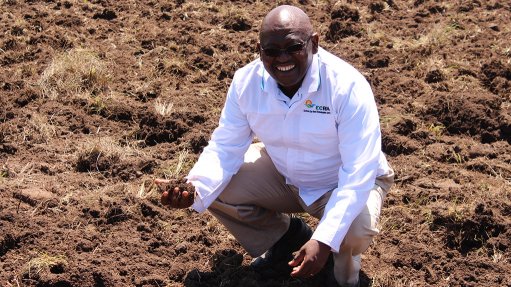
Eastern Cape Rural Development Agency CEO Thozamile Gwanya
Rural development financier the Eastern Cape Rural Development Agency (ECRDA) CEO Thozamile Gwanya on Tuesday launched a three-year R100-million agroprocessing programme aimed at benefiting 996 landowners in the rural towns of Bizana and Lady Frere, in the Eastern Cape.
R53-million and R46-million respectively had been committed to Bizana and Lady Frere over the next three years.
In the first season of planting, 1 000 ha of white maize would be planted in Bizana and 100 ha of sorghum would be planted in Lady Frere. R20-million had been committed for the initiative at both sites, with the bulk of funding, about R19.2-million, going toward mechanisation units and equipment.
Gwanya said the R100-million for the initiative was sourced from the Eastern Cape Provincial Treasury and was in addition to the previous R91-million committed in 2013 by the Development Bank of Southern Africa’s (DBSA’s) Jobs Fund to the ECRDA and the Eastern Cape Development Corporation to roll out another three-year agroprocessing programme in Ncora and Mqanduli, also in rural Eastern Cape.
This programme saw some 1 866 ha of white maize planted in Ncora and Mqanduli in the first season of the DBSAs Jobs Fund agroprocessing initiative.
“We had expanded the Mqanduli and Ncora Rural Enterprise Development (RED) Hubs from 1 866 ha in the first season to 2 000 ha this season. Some R16-million had been spent on the two sites this season with individual landowners contributing 25%, or R4-million of the total,” said Gwanya.
The initiative was being operated according to the ECRDAs RED Hub concept, which prioritised the village as the centre of operation. In practice, the RED Hub concept meant that the produce would be grown by the community, milled in the community, processed and packaged in the community and even sold back into the community with the whole process being owned by these communities, Gwanya explained.
The concept linked the three market elements of production, processing and marketing to boost the competitiveness of rural economies and communities. The result being that production would receive the market support it needed to flourish with the money circulating within a community for as long as possible.
These RED Hub market elements made up the value chain of the rural economy with coordination, integration and marketing being the core functions of the RED Hub. Ultimately, this concept created a platform for economic activity resulting in increased rural incomes through the facilitation of primary production, promoting rural savings and investment, and processing, as well as the creation of a communal and external market.
In the first year, government contributed 100% of the production costs and, thereafter, the landowners, through cooperatives, contributed to production on a sliding scale. For example, in the second season, the landowners would contribute 25% of costs, and 50%, 75% and 100% from the third to fifth year. This created self-sustainability and a sense of ownership by communities in these programmes.
“The ultimate objective is building vibrant rural economies, reducing poverty, ensuring food security and empowering communities,” Gwanya concluded.